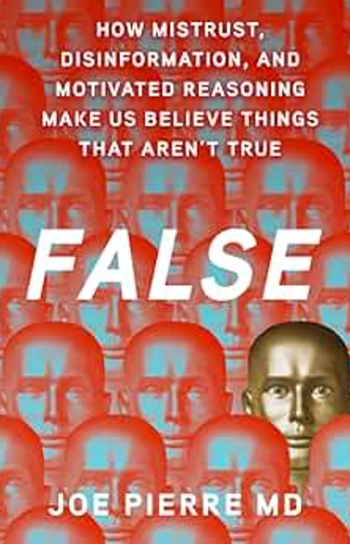
- Psychiatric Times Vol 35, Issue 11
- Volume 35
- Issue 11
BlacKkKlansman Still Birth of a Nation
The most scorching inditement of racism yet in film. Warning: spoilers.
MEDIA ON MY MIND
Editor’s Note:Dr Greenberg recommends that, because of spoilers, BlacKkKlansman be seen before reading his review.
The so-called “problem” film emerged during the 1930s during the Great Depression. It rejected Hollywood’s traditional addiction to neat happy endings. Films like I Am a Prisoner in a Chain Gang (1939) and The Grapes of Wrath (1940) addressed the era’s poverty and economic injustice. Studio moguls were initially doubtful about “message” movies’ commercial viability. Who wanted dispirited audiences to exit the theater more bummed out then when they came in? The problem genre proved unexpectedly popular. Warner Brothers, under the charismatic dictatorship of Darryl Zanuck, notably figured in producing inexpensive, gritty hit message pictures. Eventually other studios cashed in on the trend.
With the onset of World War II, problem films probed homebrewed and worldwide fascism. After the war, profitable subjects included veterans’ angst (The Best Years of Our Lives [1946]), antisemitism (Gentlemans’ Agreement [1948]), and racism (Home of the Brave [1949]). By now the genre has become a staple at vastly higher production costs; stoked by the abundant injustices of our day-predatory corporations, human trafficking, homophobia, so forth.
Film scholars have been particularly interested in these classic message films. Message films received due critical praise but were also taken to task in some quarters for minimizing a social problem’s complexity and pervasiveness in aid of a tidy felicitous finish. The genre’s social difficulty commonly involved a single or few victims. A courageous reporter, staunch lawyer, or incorruptible commission exposed a few rotten apples who received due punishment. Some critics on the left warned that audiences might be lulled into believing that no further action needed to be taken in the real world. (To be fair, while the problem movie took on controversial topics, it also had to adhere to the studio mandate that good always happily prevailed.)
BlacKkKlansman, Spike Lee’s new film, is his most scorching inditement of racism. Lee’s achievement is hallmarked by subtle deployment of the problem genre’s promise of a satisfying resolution throughout the entire film-until an astonishing, exceptionally disturbing conclusion, of which more presently.
BlacKkKlansman is based Ron Stallworth’s memoir about his experiences as Colorado Springs’ first African American policeman during the Vietnam era. (Stallworth would later become the department chief.) He’s introduced peering from below at a recruitment ad proclaiming equal opportunity employment. The sign’s imposing height and appearance slyly imply little enthusiasm in higher circles for its placement. Ron (John David Washington, Denzel’s son, replicates his father’s insouciant cool) comes across as an earnest, eager cipher. One will discover that opaque deferentiality is his default position when dealing with the white world.
He’s interviewed by a whipcord tough chief and an impassive, bloated black political hack. Ron responds to their loaded questions with studied calm; states that he was brought up “right,” in a military family; has no vices; can stand up to racist baiting. Ron is hired and promptly sent to the record room where fellow officers call black suspects “toads.” He requests a transfer with his signature terse respect, the chief suspects his would-be examplar might turn whistle-blower. Ron is dispatched to a tiny “intelligence” unit. Its staff is unexpectedly congenial. Ron gratefully identifies with their waggish, renegade spirit.
Ron is assigned to monitor a fiery Stokely Carmichael speech at the university’s black student caucus. He’s instantly smitten with its alluring leader, Patrice (a feisty Laura Harrier). She possesses the requisite big afro, granny glasses, and right-on salute. Lee not only wonderfully captures the movement’s look and speech, his mellow mise-en-scene evokes the Vietnam era’s hallmark details with ineffable “suchness.”
Ron passes himself off as a potential activist. He’s more interested in courting Patrice than spying on her comrades. He finds Carmichael’s black-power hyperbole offputting; it nevertheless spurs a dawning awareness of his own self-deception-imagining that he could easily get along with crude racist reality.
Hence, his impulsive call later from headquarters to a local KKK chapter seeking new Aryan-pure blood. Ron’s impersonation of an equal opportunity hater is so convincing he’s asked to join. Since the Klan has lately posed another threat to the status quo, his improvised goof winds up sanctioning the chapter’s infiltration. A white team member, Flip Zimmerman-a non-practising Jew (Adam Driver) assumes Ron’s name, a different professional identity, and address. He, too, comes to question his complacency. Flip’s quick rise in the chapter gets David Duke’s attention in Washington, enabling phone chats with the fatuously cheery leader and the “real” Ron.
Deep into BlacKkKlansman, Lee has continued to underplay the Klan’s menace. The prevailing tone has been jocular/satiric (eg, Duke’s wacky truths about identifying “hidden” blacks by their speech nuances).
The Klan klatch resembles a bumbling preadolescent clubhouse, with arcane symbols, secret words, arcane regalia. Despite flaunting a murderous arsenal, the doofus bunch doesn’t bring off a single cross burning because of utter incompetence and the undercover unit’s tip-offs. When Duke visits Colorado Springs to induct new members, Lee begins unpacking the old holocaust mentality of Duke’s new, supposedly user-friendly “nationalist” Klan. The ceremony is a sinister mirror of a church mass robed in priestly vestments, Duke openly advocates extinction of the impure legions of blacks, Jews, and Catholics threatening God-given white Christian rule. A celebratory screening of DW Griffith’s The Birth of a Nation follows, its mockery and mayhem giddily cheered on by the yahoo initiates and their families.
In a simultaneous student meeting elsewhere, an aged activist describes the gruesome torture and lynching of a friend during his boyhood. Intercutting between Klan and student meeting recapitulates many of Griffith’s seminal contributions to cinematic rhetoric. Lee clearly uses the device here as an anti-tribute.
Shortly afterwards Ron pulls off Patrice’s last-second rescue from a bungled Klan bombing, which causes the chapter’s exposure and dissolution. Back at headquarters, Ron receives a high-five from all. Too boot, the arch-sleazy racist cop is entrapped in sexual misconduct by the team, and jailed. The rejoicing is extinguished by the chief summarily ordering the record of the team’s triumph expunged.
Haunting memories of the elder activist’s scarifying tale echo in one’s mind as Lee delivers the devastating deconstruction of the problem genre’s disingenuous conclusion he’s been cannily preparing the viewer for. Patrice and Ron meet at her apartment. As they debate their relationship-now she knows he’s a cop-there’s an ominous rap at the door. In a magisterial Hitchcockian tracking shot the pair seems to float uncannily forward, as the background eerily recedes. The two move toward a tiny pinprick of light in the window. Lee’s camera swoops down revealing a giant burning cross, circled by an obscenely capering coven of klansmen. History is knocking at the door!
Lee instantly jump cuts to actual TV coverage of the fatal confrontation at Charlottesville between white supremacists and protestors. The sequence utterly confounds every assertion of “good people” on both sides. While this scene comprises a fraction of BlacKkKlansman, one realizes with a start that all that’s come before was a necessary prelude to the director’s jarring wake-up call.
BlacKkKlansman ends in utter silence: an inverted American flag fills the screen, the distress call is emphasized as the flag’s luminous color fades to stark, lingering black and white. The conclusion is a derisive response to Lee’s establishing sequence: the famous scene from Gone With the Wind (1939) in which the camera pans across a multitude of wounded Confederate soldiers, and rises to a fitfully stirring “Stars-and-Bars.” Gone With The Wind-Zanuck’s Griffithian triumph-never depicts a whit of slavery’s intolerable suffering.
Safely ensconced in our seats, rapt in Lee’s front story, we’ve been lulled into feeling safely distant from the racism raging in a deeply divided America. Lee has dashed the comfortable illusion of social progress, given back to us the keys of responsibility for honorable action to stem the swelling tide of racism, as well as the host of articulated evils destroying our country’s social fabric.
Although, BlacKkKlansman is threaded with references to the distorted glosses on racial injustice that have pervaded American cinema since its inception Lee chiefly targets the problem film’s facile comfort. Lee’s withering denunciation embraces Griffith’s repugnant summons to violence, implicit commendation of slavery in Gone With the Wind, as well as the pseudo-positive depictions of the sixties blaxploitation genre-at one point even Ron and Patrice argue whether the phallic stereotypes of Shaft (1971) or Super Fly (1972) offer African-Americans more empowerment.
In 1919, The Birth of Nation was the first feature ever shown at the White House. Woodrow Wilson called it “history written with lightning,” inaugurating a resurgence of a nearly defunct Klan. A century later, Lee answers Wilson’s detestable accolade-illuminating with actinic brilliance enduring racism’s repugnant emblem of national disgrace.
Disclosures:
Dr Greenberg practices psychiatry in Manhattan, New York. He continues to publish frequently on film, media, and popular culture. For many years, his cinema column appeared in Psychiatric Times. Please address communications to Dr Greenberg at HRGSMES@AOL.COM.
Articles in this issue
about 7 years ago
Introduction: Gender-Specific Issues Relative to Mental Illnessabout 7 years ago
Clinical Implications of Gender Differences in Schizophreniaabout 7 years ago
Sex Hormones and Gender Vulnerabilities to Anxiety Disordersabout 7 years ago
Sex and Gender Differences in Alzheimer Disease Dementiaabout 7 years ago
Gender Differences in Addiction: Clinical Implicationsabout 7 years ago
Psychiatry’s Ancient Originsabout 7 years ago
In the Room With Climate Anxietyabout 7 years ago
Portraits of a Psychiatrist’s Lifeabout 7 years ago
Screentime Solutions for Depression and Bipolarabout 7 years ago
Ordinary MorningsNewsletter
Receive trusted psychiatric news, expert analysis, and clinical insights — subscribe today to support your practice and your patients.

















